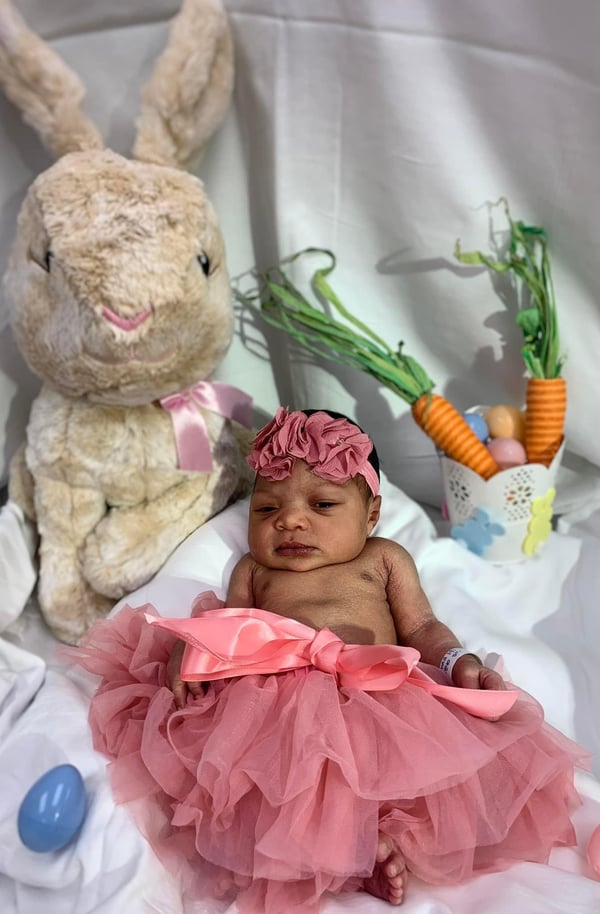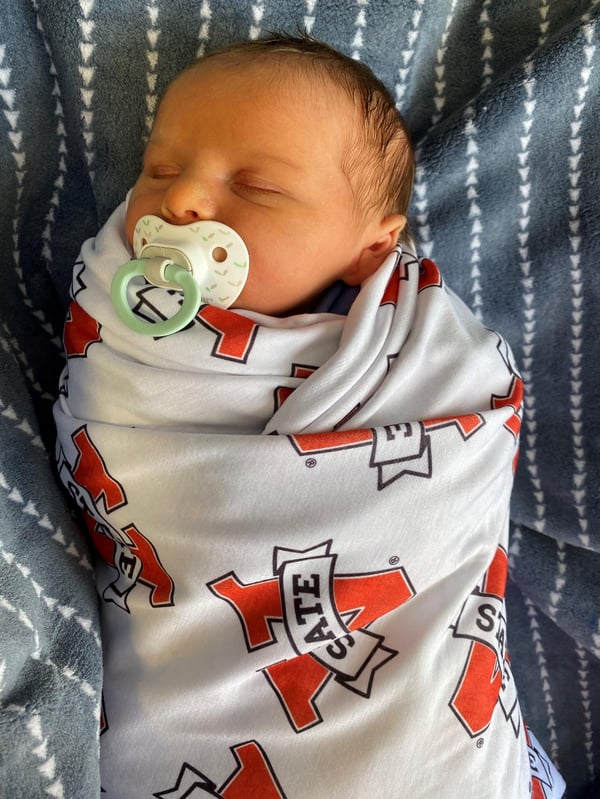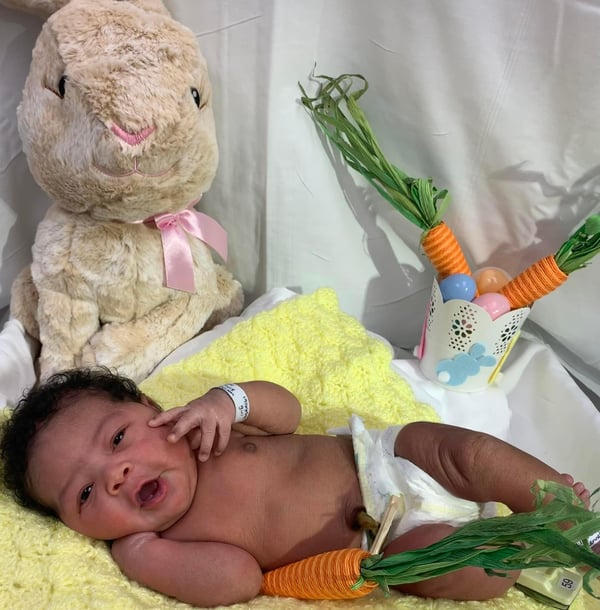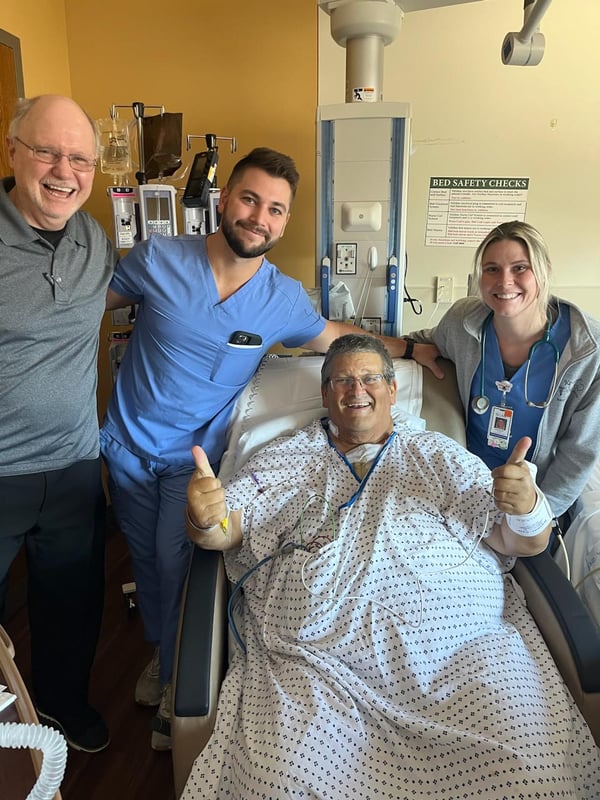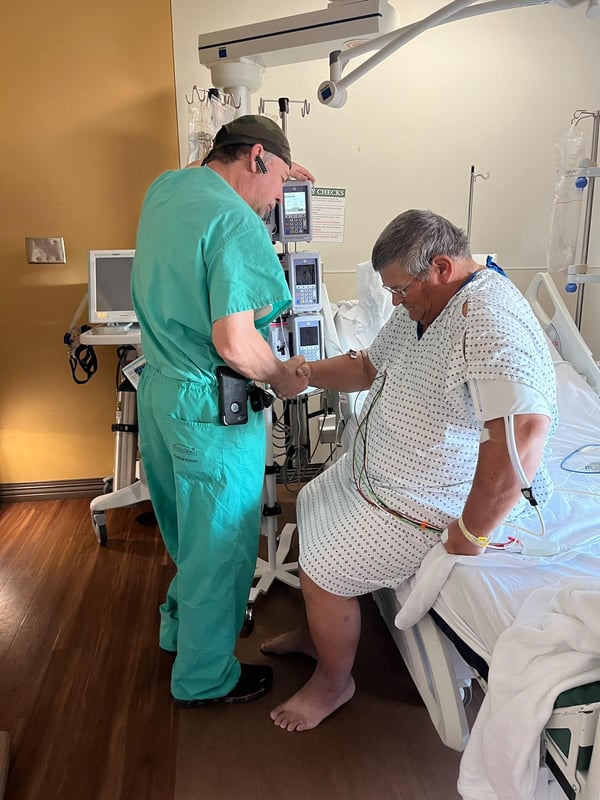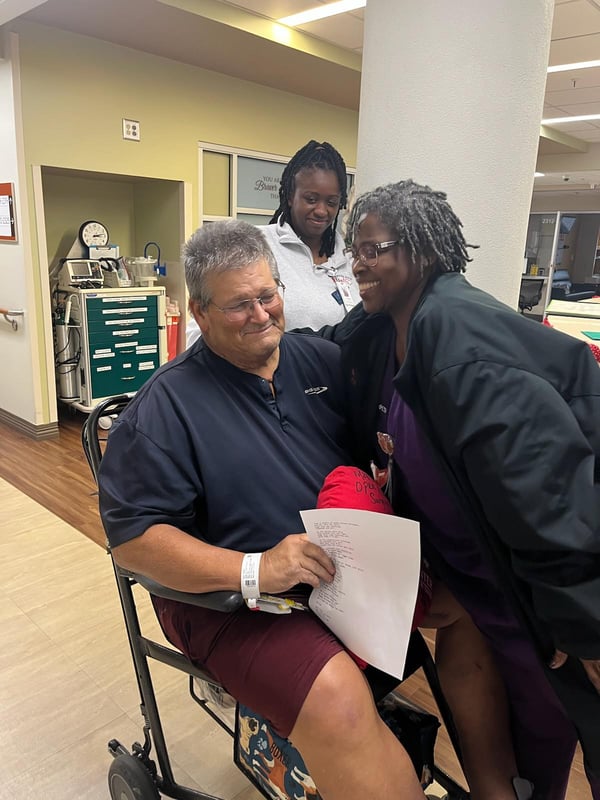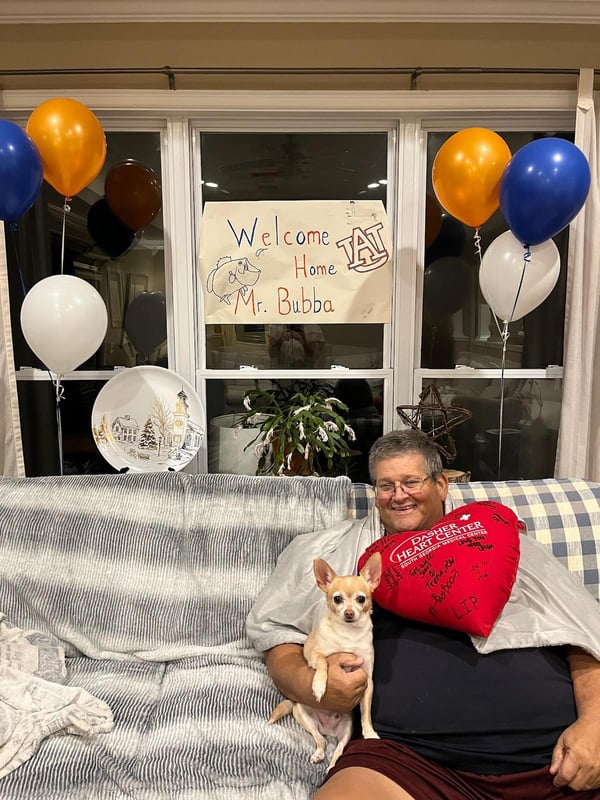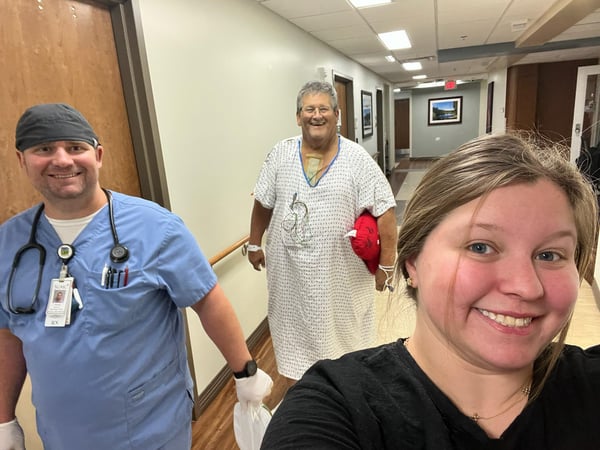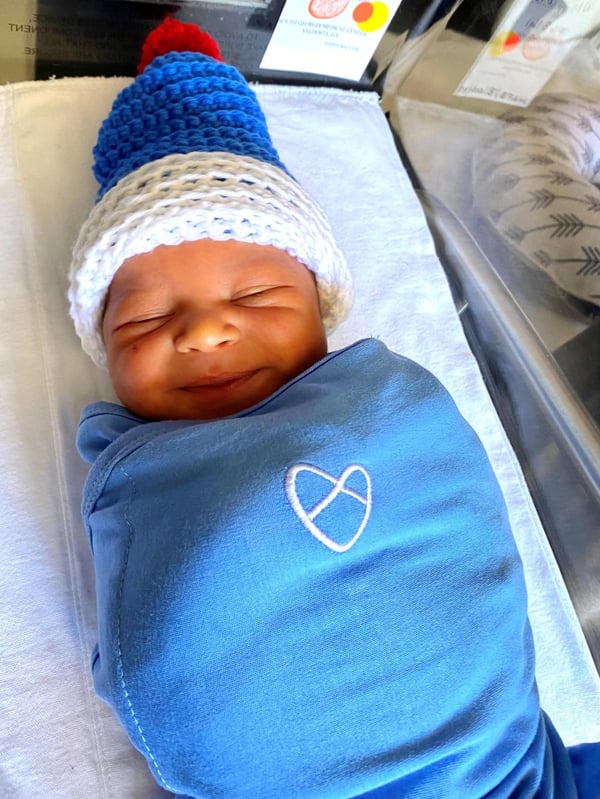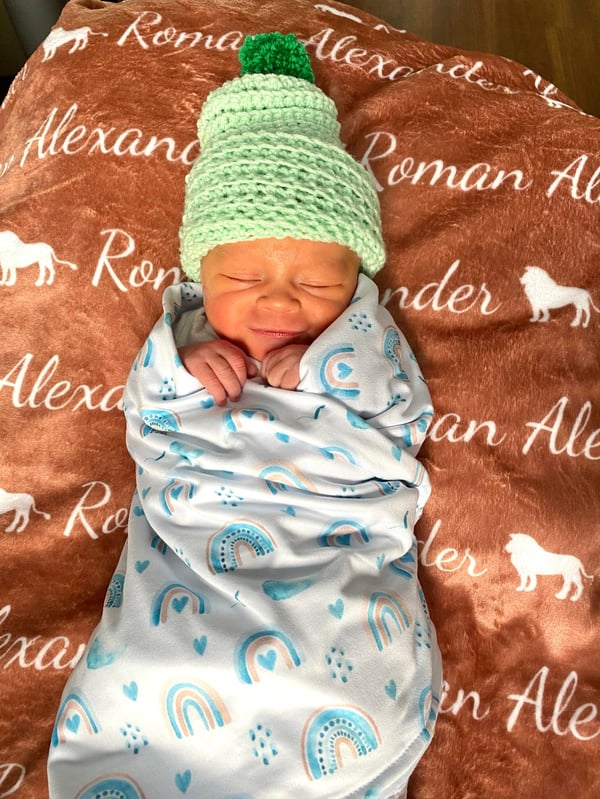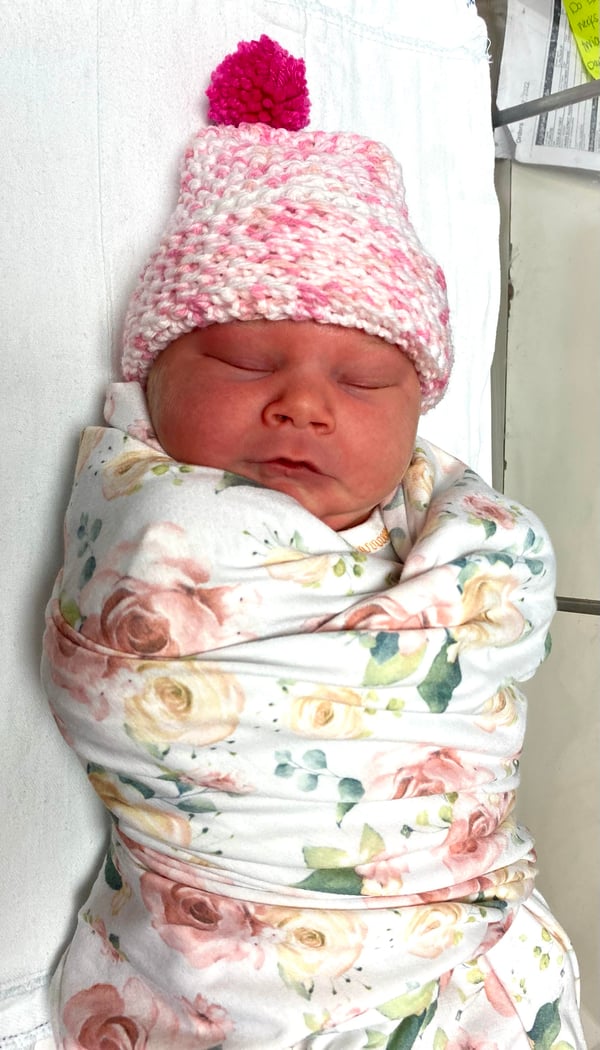Unsurpassed Patient Experience
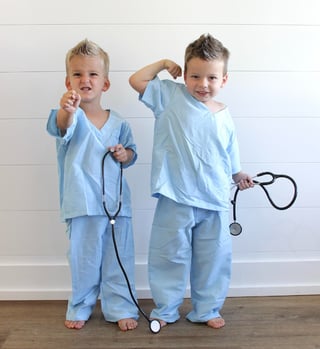
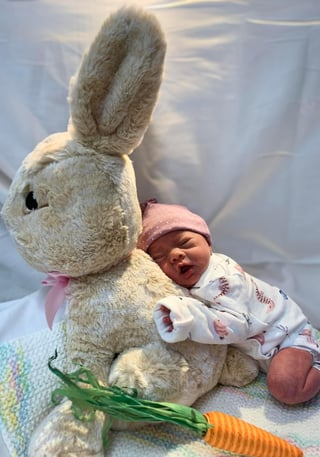
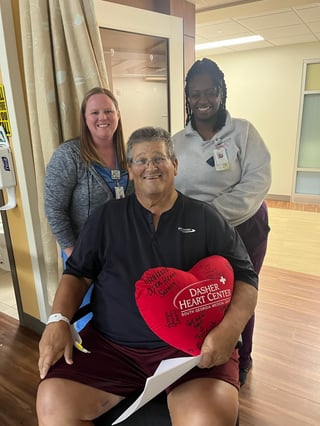
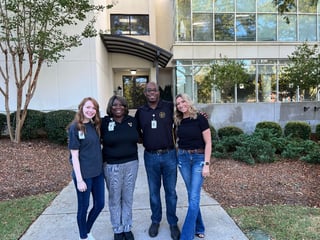
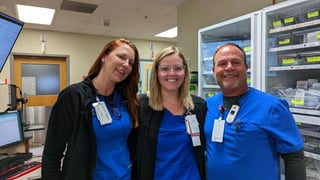

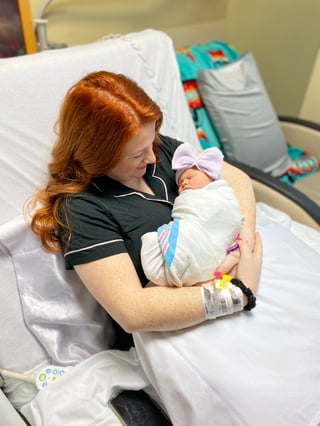
Donating Mothers Give the Gift of Life – Twice
Mothers who deliver their babies at South Georgia Medical Center have the opportunity to provide donations of their cord blood and placenta to help patients around the world.
In April 2022, SGMC launched its public cord blood banking program in partnership with LifeSouth Cord Blood Bank, a public non-profit licensed by the U.S. Food and Drug Administration.
Cord blood, which is normally discarded by most following delivery, can be used to save lives by effectively treating more than 80 diseases. Life-threatening conditions such as leukemia, sickle cell disease, and Hurler syndrome have all seen successful treatment with stem cell transplants.
Donated cord blood that meets eligibility criteria will be listed on the Be The Match Registry®, the world’s largest donor registry. These units are then available to transplant centers and patients in need around the world.
“What better way to welcome your child into this world, than by choosing to donate something that is otherwise discarded, to help enhance the lives of others,” says Debbie Smith, SGMC Women & Children Nurse Manager.
LifeSouth Cord Blood Bank is a program of LifeSouth Community Blood Centers, the sole provider of blood to SGMC since 2016.
A month later, in May 2022, SGMC began its placenta donation program in partnership with TelaGen.
-1.jpeg?width=2000&height=1500&name=Cord%20Blood%20Banking%20-%201st%20day%20(1)-1.jpeg)
According to Peggy Knight, SGMC Administrative Director of Women and Children, the program gives expectant mothers who are scheduled to deliver their baby via Caesarean section the option of donating their placenta and the attached amniotic membrane (or water bag).
The tissue from the donation is then processed and used to stimulate cell growth in a variety of reconstructive procedures, including the healing of wounds and burns, spinal procedures, and eye procedures, according to TelaGen.
The donation process is purely optional and doesn’t affect the delivery of the baby in any way, Knight said. The placenta is simply collected and preserved afterward instead of being discarded.
Additionally, it doesn’t cost the new mother anything. In fact, as part of SGMC’s agreement with TelaGen, for each placenta donated at the hospital, the company will make a $25 donation to a charity chosen by the delivering physician and another $25 donation to a charity chosen by the Women and Children’s department.
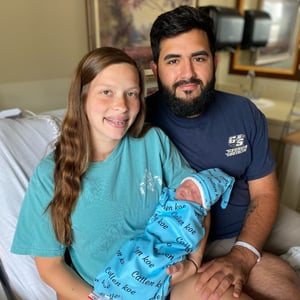
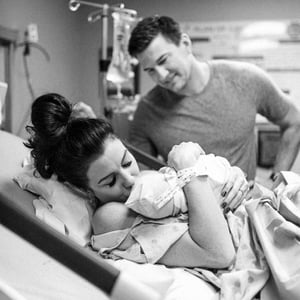
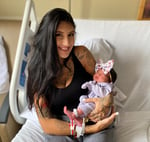
That might not sound like a lot, but with somewhere in the neighborhood of 750 babies delivered via C-section at SGMC last year, it can add up quickly.
SGMC is committed to women’s health throughout the region and continues to deploy the latest technology and develop cutting-edge programs for women and infants. SGMC’s Birthplace has the region’s only Level IIB Neonatal Intensive Care Unit with two neonatologists and the area’s only OB hospitalist program and OB emergency department. SGMC is one of only three hospitals in Georgia to offer AngelEye Health, a secure video surveillance to connect families with their newborns.
SGMC delivers more than 2,000 babies annually. For more information on any of these programs, visit sgmc.org.
Subscribe for updates Never miss a beat.
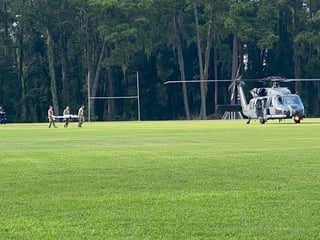
The Fight for a Flight
When it would be much easier to accept a situation as it is, our health care professionals fight tirelessly until they've achieved the best-case option for our patients.
In September 2022, SGMC was caring for an active duty airman. This patient was in remission from a previous cancer diagnosis that was treated when he was still residing in his hometown, Tampa, FL.
The patient, only in his early 30's, had a wife and young daughter. He had recently come down with a viral illness and his sickness required him to be hospitalized at SGMC. While in the hospital, the patient required ICU level care, quickly becoming disoriented, which prompted an evaluation from medical oncologist Dr. Swapna Narayana.
After determining his cancer had returned, Dr. Narayana consulted with the patient's original cancer treatment team at Moffitt Cancer Center in Tampa. The young airman needed to be evaluated for a stem cell transplant immediately.
The patient's Case Manager Ashli Dasher, RN, jumped into action. As in most hospitals, every inpatient at SGMC is also cared for by case management and social workers, an integral part of the treatment team. Too sick to ride by ambulance, Ashli began reaching out to air flight services. Unfortunately, after multiple calls with various local air flight services, all were unable to assist. "It was an extremely rough day, as every denial was a loss of precious time," shared Ashli.
Ashli finally got a flight company to approve a flight, but it would come with a four-day delay.
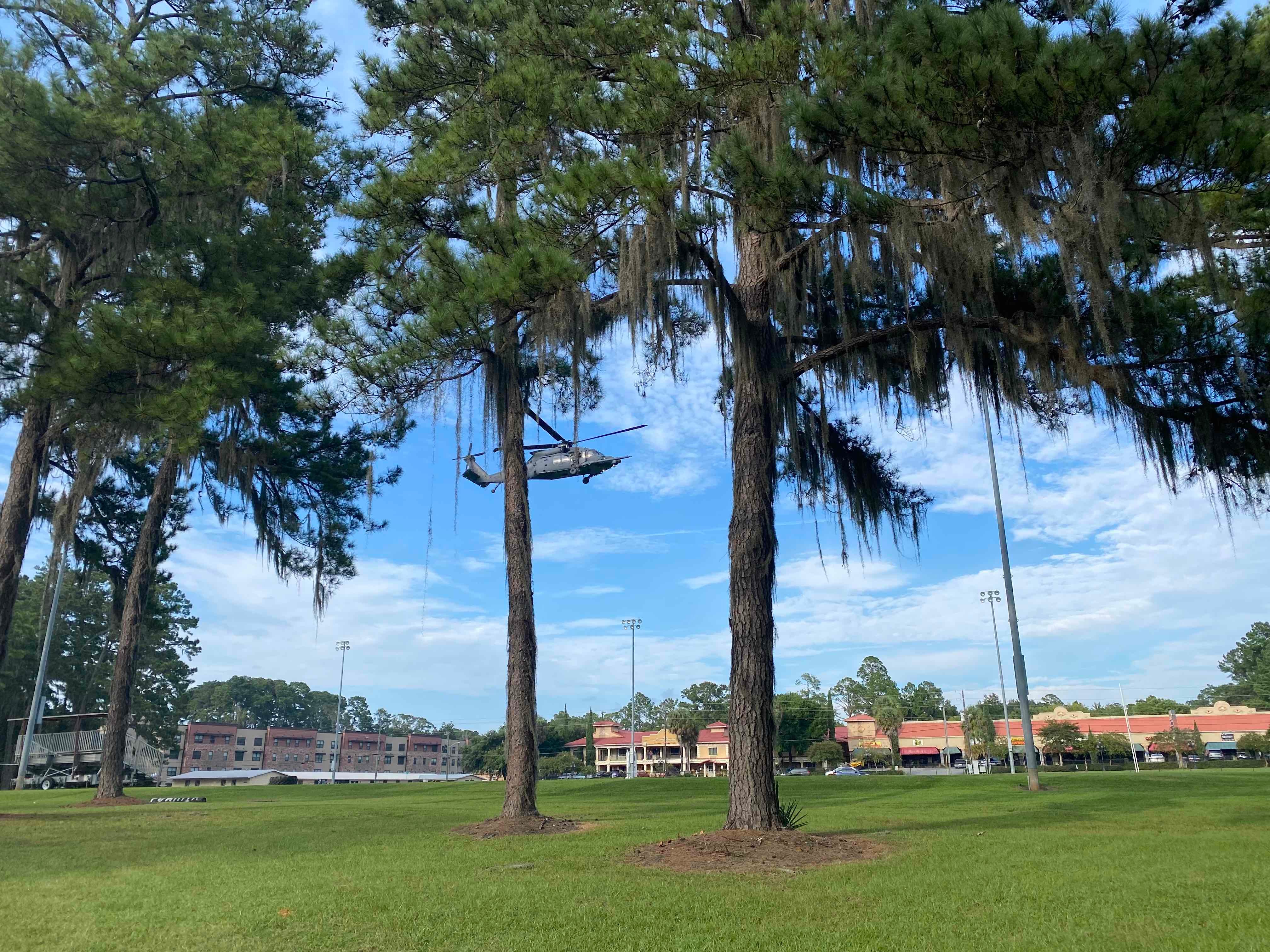
The patient could not wait that long. "This man needed treatment now."
Frustrated with obvious options fading, Ashli was determined to help the patient and began discussing the case with fellow case managers and social workers.
SGMC Neurosurgeon, Dr. Kimberly Mackey, was charting at a computer near Ashli at the time and overheard the conversation. A passionate patient advocate herself, she couldn't help but join the team in an effort to get this patient back to Tampa to receive the treatment he desperately needed.
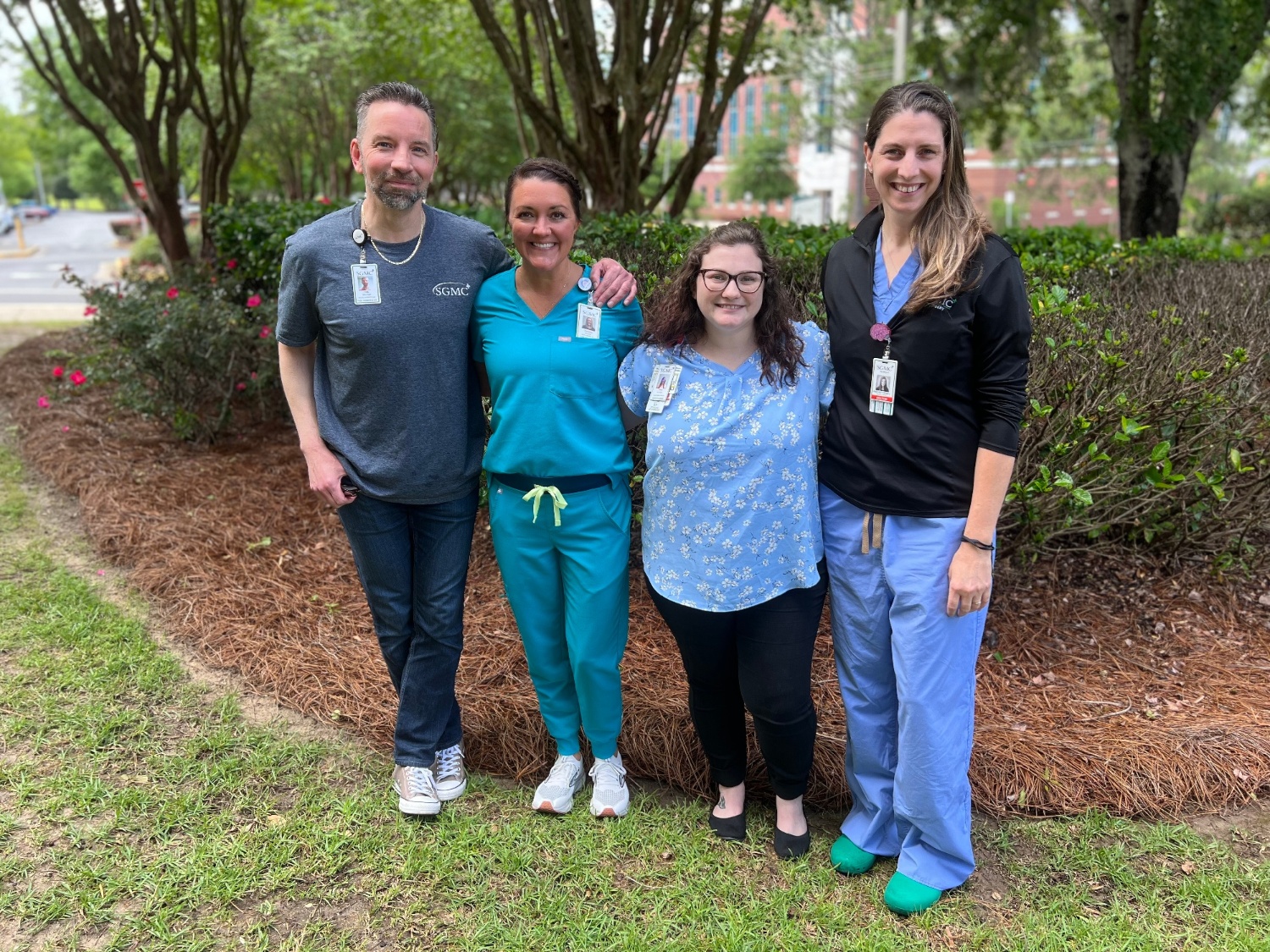
SGMC Case Management professionals and Dr. Kimberly Mackey
Dr. Mackey reached out to the Air Force Rescue Coordination Center for their assistance. After extensive coordination and outreach across many entities, the flight was approved by Moody Air Force Base officials. Less than 43 minutes after receiving the mission, Air Force Rescue 490 was airborne.
The HH-60W “Jolly Green II” rescue helicopter landed on the soccer field between SGMC and Valdosta State University. The patient was transported by ambulance to the helicopter and was soon in the air.
Capt. John “Jack Sparrow” O’Neill, the aircraft commander, said they were dodging bad weather the whole way to Tampa but made it there safely. Air Force Rescue 490 landed at a soccer field in less than 3 hours in Tampa.
They were met by a Moffitt Magnolia Center ambulance and taken to Moffitt Magnolia Center. The Air Force Rescue Coordination Center credited the 41st and 38th Rescue Squadron with one save.
And SGMC was credited with one save as well. Dr. Mackey shared that this is just one example of how our social workers advocate for their patients and make magic happen every day.

Advanced Heart Surgery
Lake Blackshear native Hugh "Bubba" Ivey woke up at 2:30am on Thanksgiving morning and knew something wasn't right. He got up, jumped in the shower, and woke his wife up to take him to the hospital in Cordele.
Doctors there began monitoring him and zeroed in on an issue with his cardiac enzymes. Ivey decided he wanted to get the guidance of his friend Dr. Kamil Hanna, SGMC Electrophysiologist.
Dr. Hanna was in Arkansas for a Thanksgiving celebration with his family, but he still took Ivey's call. He spoke with the emergency room physician treating Ivey and jumped into action after hearing his levels. "He's on the verge of having a heart attack. Send him down to SGMC in Valdosta now."
Ivey was transferred to SGMC, where the staff were anticipating his arrival.
"I thought I was in the Grey's Anatomy TV series the way they were there waiting for me."
The next day, Ivey was scheduled for a heart catheterization with Dr. Daryoosh Derakhshan, Interventional Cardiologist. The cath revealed that Ivey would need triple bypass open heart surgery. The team recommended surgery first thing Monday morning.
"We put our faith in God and the doctors, and we waited until Monday," said Ivey's wife, Cathy.
Monday morning rolled around and Ivey underwent the procedure with cardiothoracic surgeons Drs. Randy Brown, Joe Johnson, and James Shoptaw. During surgery, several critical issues arose including calcification of the pericardium, or heart sack, making it extremely difficult to expose the heart and rupture of the aorta. These issues transformed a routine surgery into an emergency rescue surgery lasting over 8 hours.
The Ivey family was kept updated throughout the surgery via telephone by the circulating nurse, Amber Frasier, and in person by Kelly Blackmon, Nurse Practitioner for SGMC Cardiovascular Institute and the Valve Clinic Coordinator for the SGMC Structural Heart Center, Dr. Hanna, and Taylor Fiveash, Electrophysiology NP. A group prayer was conducted for Mr. Ivey and the heart team as they worked diligently to save Mr. Ivey’s life.
When Ivey got a chance to visit with Dr. Brown the next day, he explained what the care team had found and how the surgery plans had changed. "You're a miracle. You came out of this thing and only a small percentage of people do."
Ivey stayed in the hospital for two more weeks for recovery. He says the staff kept him going and pushed him through the healing process. He was given tasks such as walking laps through the halls. "Everything they told me to do, I would do more. I set the bar higher than they had set it for me."
When Ivey was discharged, his care team was amazed at his swift progress. He gives them a lot of credit.
"I can't say enough about my experience at SGMC. The love shown for the patients is incredible."
Ivey is especially grateful for the expert cardiac team at SGMC. "Kamil Hanna is the reason we went there. We knew he had already done some masterful things with other people, and we trust him."
If Ivey has learned anything from this experience, it is the importance of listening to your body.
"Going to the emergency room, listening to my body... that saved my life."
Subscribe for updates Be the first to know.

Firefighter Beats the Odds
Following ATV Accident
Twenty-one-year-old firefighter Justin Daugherty does not remember many of the details of his February 2022 all-terrain vehicle accident. One minute he was having fun with his friends at a mud park in Berrien County. The next minute, his ATV flipped over and landed on his chest. He has no memory of the next 24 hours.
On the scene, first responders arrived to stabilize Daugherty and transported him to South Georgia Medical Center. Their quick work was just one of the lifesaving moments following his accident.
When Daugherty awoke a day later, unbeknownst to him, he had been through two resuscitations, two blood infusions, and a medically-induced coma. He opened his eyes to find he was on a ventilator. He had broken ribs in twenty-four places, a cracked sternum, and a separated joint in his shoulder. He also had punctured and collapsed lungs with three tubes coming out of his chest.
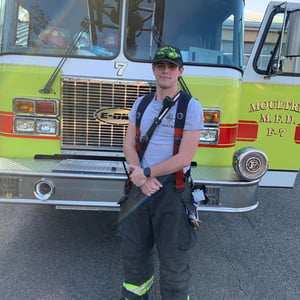
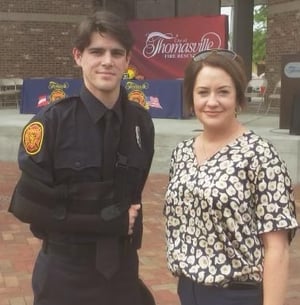
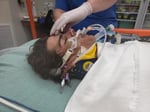
Once he was off the ventilator a day later, the pain kicked in. He spent two weeks at SGMC following the accident. During that time, Daugherty lost close to 75 pounds and had no appetite. He was down to 115 pounds when he left the hospital.
During his stay, he and his mother developed close relationships with some of the care team and staff, including Emily Brown, Trauma Program Manager.
"UTV accident patients are no rare occurrence here at SGMC," said Brown. "Justin’s accident happened late on a Saturday afternoon, and when he arrived the entire team knew, before he even got all the way into the trauma bay, his injuries were very severe."
"Justin's tenacity during his recovery, their support and encouragement and just the overall kindness shown to our team by Justin and his mother, made us cheer for him a little louder."

Daugherty was anxious to get out of his hospital bed and on the road to recovery. His chief concern was when he could go back to work. Doctors told Daugherty that he might be able to return as a firefighter in 7 months' time, around September 2022.
On his last day in the hospital, Daugherty told Brown, "I'll be back on the truck in July." He was determined.
While the initial healing was tough, the long-term recovery was grueling. Daugherty had shoulder surgery to repair his shoulder separation. "I could barely even lift my shoulder, and I couldn't hold anything more than a water bottle for six to eight weeks," shared Daugherty.
Following the surgery, his next task was to regain his strength and conditioning. He knew that being a firefighter was a strenuous job, and he would be required to pass a fitness test in order to get back on a fire truck.
He worked daily to build his muscles back up, referring to himself as "hardheaded" to beat the doctors' estimated timeline. Five months later, in July as promised, he was back on a fire truck.
"Justin’s tenacity during his recovery, their support and encouragement and just the overall kindness shown to our team by Justin and his mother, made us cheer for him a little louder," shared Brown. "We all wanted to see him meet his goal of being back on the truck in July."
Daugherty believes that he is now stronger than he's ever been in his life.
"It's weird to say this, but I'm glad it happened," shares Daugherty. "It screwed my head on straight and made me realize what's important in life."
Daugherty said that he and his family believe that the stars aligned for him during his hospital stay. "The team on call was a multitude of the best people in the hospital that day. I think the big man upstairs was looking after me."
Brown concludes, "It is humbling to be part of such a great team, but also to be allowed by the patient and his family to follow his journey and see the end results and be considered part of their family."
"As a firefighter, Justin will continue to serve his community, which he has a great passion for, and will care for many people and their families along the way. His accident taught him firsthand about empathy and compassion and the impact great caregivers have on the end result."
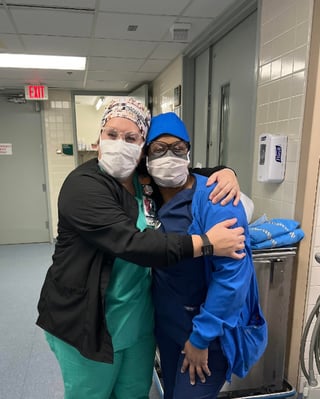
The Heart of Healthcare
According to the American Association of Colleges of Nursing, nursing is the nation's largest health care profession with more than 3.1 million RNs practicing nationwide. Despite its large size, many more nurses are needed to meet the growing demand for nursing care.
We wanted to learn more about what makes our nurses tick, why they chose nursing, and why they continue to choose serving others each and every day.
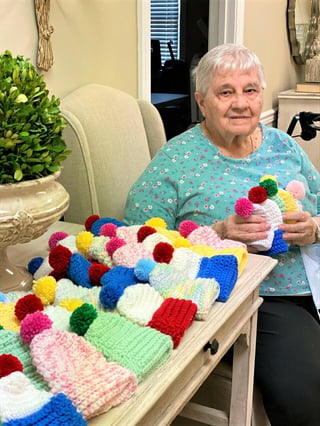
Newborns Receive Crocheted Hats
Donated by Langdale Place Resident
Ramona Gefre has been crocheting baby hats to donate to hospitals across the country for more than twenty years. It began in the early 2000s when she volunteered at a hospital on the border of Mexico in McAllen, Texas. The hospital put out a call needing baby hats, so she and some of her coworkers decided to learn how to make them.
In 2015, Gefre moved to the Valdosta community and settled into Langdale Place senior living facility, an affiliate of South Georgia Medical Center. Looking for a way to continue to give back through her crocheting, Gefre continued to knit newborn hats and began donating them to babies born at SGMC.
This past year, Gefre donated more than sixty hats to SGMC in varying colors and patterns. The labor and delivery staff then give them out to parents of newborns during their hospital stay.
...she has knitted approximately 2,000 hats since she took on this hobby.
"I crochet the baby hats for entertainment and to keep me busy," shared Gefre. "My favorite hats to make are the ones I make around Christmas time."
Gefre estimates that she crochets around one hundred hats each year. That means she has knitted approximately 2,000 hats since she took on this hobby. She says one of the perks is hearing from the families that receive her creations.
"I have met some people in the community who have received baby hats I have made. The women said that their husbands have made shadow boxes with the hats and other baby items. That is really special."
Sadly, Gefre passed in February 2023. Her talent and love live on through the thousands of families that accepted her hat donations over the past two decades.
Langdale Place is a 103-unit senior living facility in the heart of Valdosta offering a warm, family-like atmosphere. It includes independent living apartments, standard and deluxe personal care suites, and a secured memory unit, making it the perfect choice for seniors and their families.
For more information about Langdale Place and SGMC, visit langdaleplace.com and sgmc.org.

One Final March:
A Patient's Special Request
Susan Radford was in her final days after a months-long battle with illness. She was placed in the intensive care unit at SGMC. Still in good spirits, Radford shared with her care team that her great-nephew was a part of the Valdosta High School band marching in the homecoming parade. The parade route was set to head north on Patterson Street right in front of the hospital.
Will Copeland, Radford's nurse on 4T, sprang into action without a second thought. He went to great lengths to fulfill Radford's request to watch the parade from the full-length hallway window outside of her room.

The care team that won the DAISY award for experience with this patient.
First, Copeland got a tape measure and measured out the hallway and cord lengths on her equipment to ensure that everything would fit. Then, he and the staff rolled Radford's bed, oxygen, and necessary equipment into the hallway to the perfect viewing spot above the parade route.
Radford was situated comfortably as the parade began with her family by her side. Her family wondered aloud if she would be able to spot her great-nephew amongst the crowded streets. Sure enough, Radford's heart rate went up as soon as she saw him.
"It was never about making her physically better; it was about making her better."
Radford passed peacefully three days later after spending her final days surrounded by her loved ones.
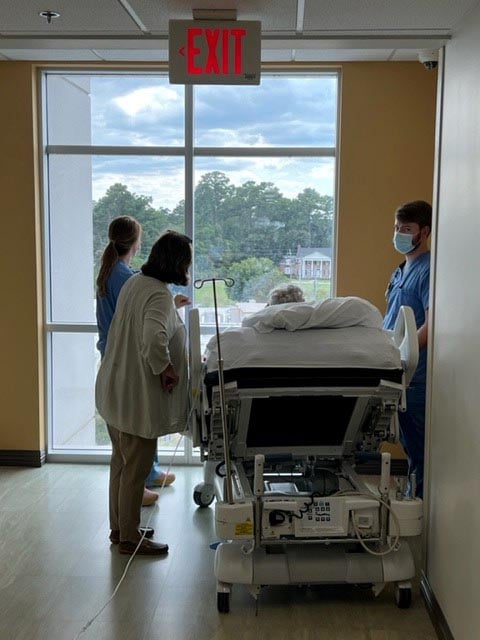
Photo courtesy of the Radford family. Pictured are Molly Radford, Stephanie Lovett, RN, Susan Radford, and Will Copeland, RN
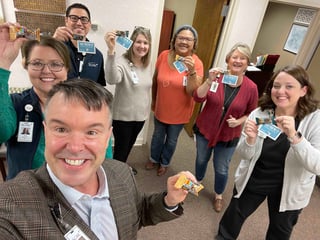
A focus on Human Kindness
SGMC understands that physical healing is not always the most impactful component of a patient’s experience. More often, it is how our team members make our patients and visitors feel that truly makes a difference.
In Fall of 2022, SGMC launched a system-wide training for all staff known as Service Essentials. This initiative aimed to cultivate a consistent high-level of service across all aspects of care and all parts of the patient's experience.
"We wanted to set a standard that our employees could commit to that would elevate the level of interactions patients and visitors have with our organization,” said SGMC Chief Human Resources Officer Brenda Alexander.
Every single member of the team participated in the training which focused on simple ways to ensure team members provide exemplary service to not only our patients and guests, but also each other.
“This initiative really connects with the human kindness component of our mission,” said Alexander. "We understand that most people do not desire to be in a hospital, but it's our goal to ensure we make that experience as convenient and comfortable as possible."

Unsung Heroes:
Beyond Direct Patient Care
Who keeps the lights on? Makes sure that supplies are ordered? Who prepares meals? Crunches the numbers? Who answers the main telephone line?
When you think of those that work in a hospital or healthcare facility, your initial thought is probably of doctors, nurses, or those that provide direct patient care. They are often the faces of our organization because they have the most interaction with patients and their families. However, it truly takes a village to keep SGMC going.
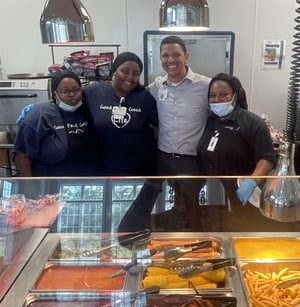

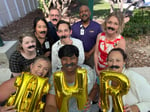
From fixing a sink, to changing sheets, to loading boxes, SGMC has teams of unsung heroes that work behind the scenes to ensure the health system runs smoothly. Of our 2,900 employees, approximately 35% fall into a non-nursing role. This group is the backbone of the organization, and their jobs allow direct care teams to fully focus on patients.
Without Human Resources, SGMC would not have staffed beds available. Without Security, there would not be a safe place to work, heal, or visit. Without Marketing, the public would not hear about all of the positive stories and growth of the health system. Without Information Services, SGMC would not have working technology. The list goes on...
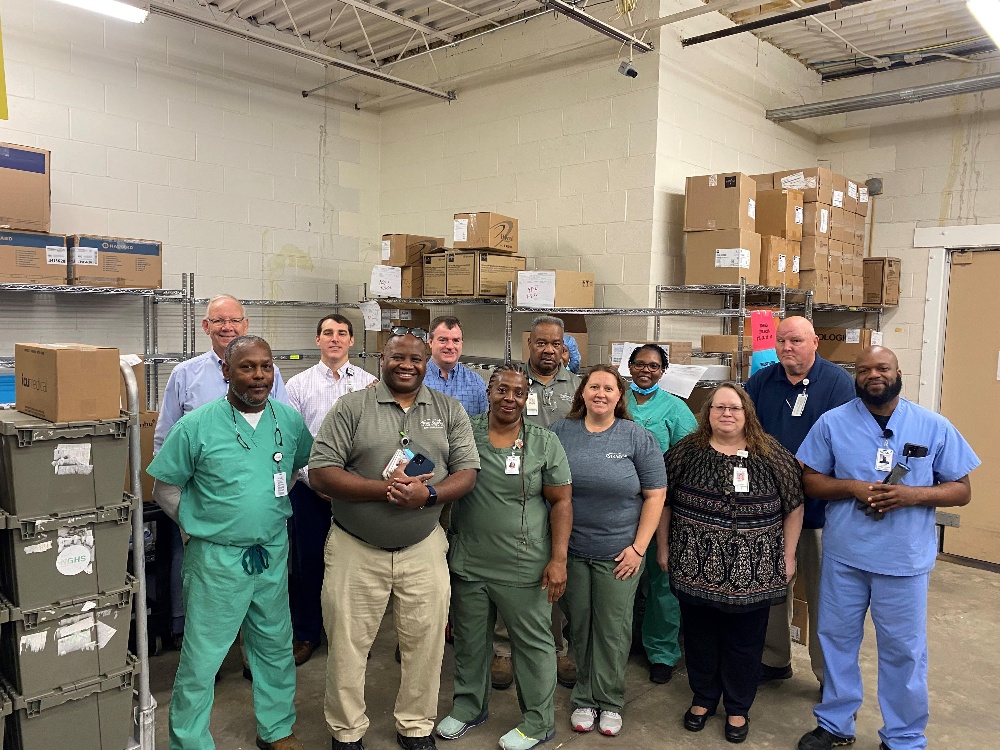
Thank you to all of those that choose to call SGMC home. Whether you are at a patient's bedside or working behind a computer, your talents are truly valuable. Together, we are SGMC strong.
